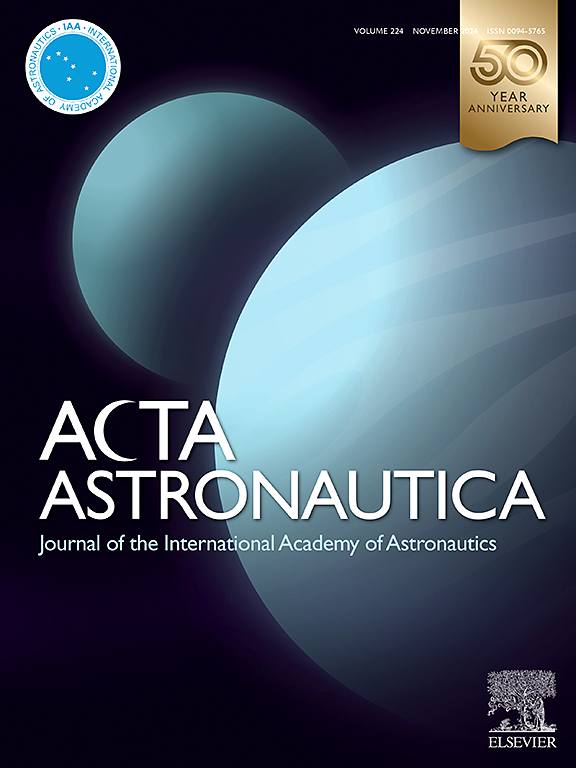The solar particle event at Mars on 2024 May 20: neutron component of the radiation environment
IF 3.1
2区 物理与天体物理
Q1 ENGINEERING, AEROSPACE
引用次数: 0
Abstract
This paper presents the observational findings for the most powerful solar particle event (SPE) on Mars in the current 25th solar cycle, based on surface (DAN/Curiosity) and orbital (HEND/Mars Odyssey) measurements. The numerical modelling of SPE proton interaction with the atmosphere and Martian surface showed that the computational results are in good agreement with the experimental data. The neutron component of the radiation background in orbit and on the surface was evaluated near the SPE maximum. The integral neutron dose on the Martian surface during the entire SPE was estimated as 600 μSv, which equals the dose received during ∼11 days in quiet Sun environment. The obtained data were extrapolated to more powerful solar events known from the history of observation. The Carrington event was used as an example. For such a hypothetical SPE, the total neutron dose may achieve as high as 240 mSv. It is 1.6 times higher than annual dose limit allowed for astronauts in the NASA ORION project.
2024年5月20日火星上的太阳粒子事件:辐射环境的中子成分
本文介绍了基于火星表面(DAN/好奇号)和轨道(HEND/火星奥德赛号)测量的第25个太阳活动周期中最强大的太阳粒子事件(SPE)的观测结果。SPE质子与大气和火星表面相互作用的数值模拟结果表明,计算结果与实验数据吻合较好。在轨和地面辐射本底的中子分量在SPE最大值附近进行了计算。在整个SPE期间,火星表面的积分中子剂量估计为600 μSv,相当于在安静的太阳环境中接受的剂量。获得的数据被外推到从观测历史中已知的更强大的太阳事件。卡灵顿事件就是一个例子。对于这种假设的SPE,总中子剂量可高达240毫西弗。这比美国宇航局ORION项目中允许的宇航员年剂量上限高出1.6倍。
本文章由计算机程序翻译,如有差异,请以英文原文为准。
求助全文
约1分钟内获得全文
求助全文
来源期刊

Acta Astronautica
工程技术-工程:宇航
CiteScore
7.20
自引率
22.90%
发文量
599
审稿时长
53 days
期刊介绍:
Acta Astronautica is sponsored by the International Academy of Astronautics. Content is based on original contributions in all fields of basic, engineering, life and social space sciences and of space technology related to:
The peaceful scientific exploration of space,
Its exploitation for human welfare and progress,
Conception, design, development and operation of space-borne and Earth-based systems,
In addition to regular issues, the journal publishes selected proceedings of the annual International Astronautical Congress (IAC), transactions of the IAA and special issues on topics of current interest, such as microgravity, space station technology, geostationary orbits, and space economics. Other subject areas include satellite technology, space transportation and communications, space energy, power and propulsion, astrodynamics, extraterrestrial intelligence and Earth observations.
 求助内容:
求助内容: 应助结果提醒方式:
应助结果提醒方式:


